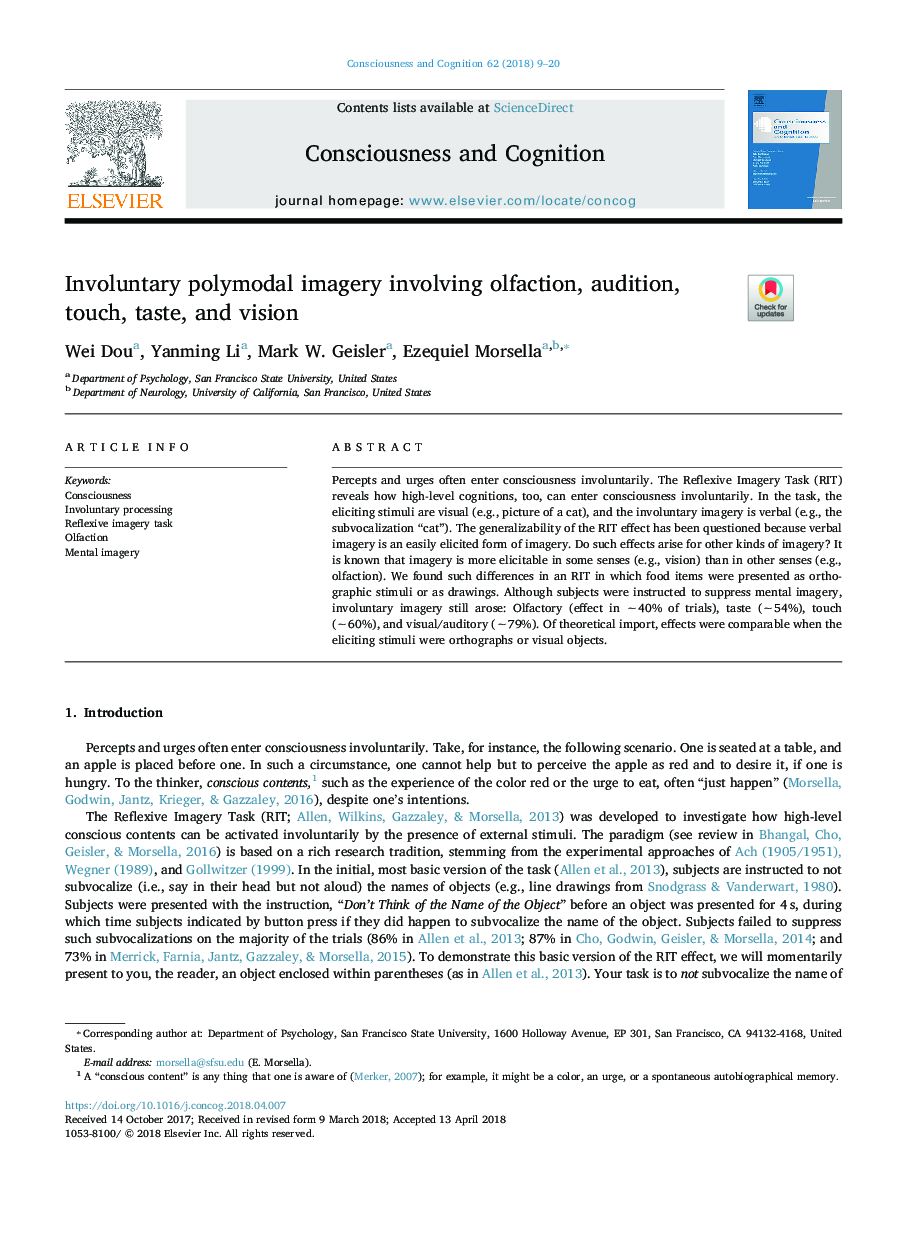| Article ID | Journal | Published Year | Pages | File Type |
|---|---|---|---|---|
| 7287865 | Consciousness and Cognition | 2018 | 12 Pages |
Abstract
Percepts and urges often enter consciousness involuntarily. The Reflexive Imagery Task (RIT) reveals how high-level cognitions, too, can enter consciousness involuntarily. In the task, the eliciting stimuli are visual (e.g., picture of a cat), and the involuntary imagery is verbal (e.g., the subvocalization “cat”). The generalizability of the RIT effect has been questioned because verbal imagery is an easily elicited form of imagery. Do such effects arise for other kinds of imagery? It is known that imagery is more elicitable in some senses (e.g., vision) than in other senses (e.g., olfaction). We found such differences in an RIT in which food items were presented as orthographic stimuli or as drawings. Although subjects were instructed to suppress mental imagery, involuntary imagery still arose: Olfactory (effect in â¼40% of trials), taste (â¼54%), touch (â¼60%), and visual/auditory (â¼79%). Of theoretical import, effects were comparable when the eliciting stimuli were orthographs or visual objects.
Keywords
Related Topics
Life Sciences
Neuroscience
Cognitive Neuroscience
Authors
Wei Dou, Yanming Li, Mark W. Geisler, Ezequiel Morsella,
